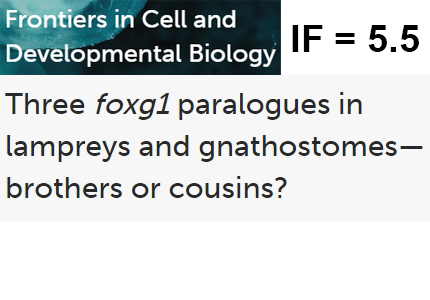
Multiple paralogs of foxg1, the regulator of forebrain development, in lampreys and sturgeons: the legacy of genomic duplications in the early evolution of vertebrates
The foxg1 is known as one of the key regulators of the early development of the forebrain and related sensory organs. Employees of the Laboratory of Molecular Basis of Embryogenesis of the Institute of Bioorganic Chemistry, Russian Academy of Sciences, were the first to identify multiple foxg1 paralogs in lampreys and sturgeons, as archaic representatives of two branches of vertebrates - jawless and gnathostomes. A phylogenetic analysis of vertebrate Foxg1 proteins was carried out, and the expression patterns of foxg1 paralogues in river lamprey and sterlet were studied. The timing of duplication of foxg1 paralogues in the evolution of agnathans and gnathostomes was estimated. As a result, no reliable pairwise orthology of the foxg1 genes was identified in agnathans and gnathostomes. At the same time, it was shown that the phylogeny of foxg1 paralogs in sturgeons corresponds to the model of ancestral duplication followed by asynchronous rediploidization and indicates a genomic duplication that occurred at the level of the common ancestor of sturgeons. The results are published in Frontiers in Cell and Developmental Biology. Learn more
25 января 2024 года

